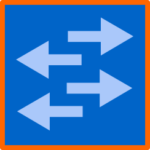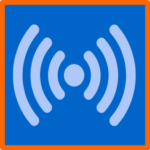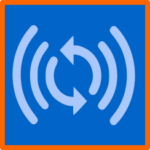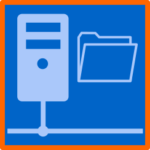Retired Techie
Getting older, not necessarily wiser!
Components: My LAN Part 4
Published on April 8, 2022 at 6:13 pm by LEWIntroduction
One of the first components you are probably going to acquire for your LAN is a router. Most likely this will be an all in one device encompassing the functions of a router, switch and wireless access point. If it comes form your ISP, it may also include a modem.
Even though these components are available boxed together in one device, they are also available individually. So we will cove the specific functionality individually before talking about devices bundled together in one package. We will also touch on the ones you can Do It Yourself (DIY).
Note I will be referencing various levels of the OSI model in some discussions below, please see this post for information.
Switch/Hub
 Without either a switch or hub, you will not have much of a network. Switches and hubs provide similar functionality in different ways. Hubs are older technology, and you will most likely not encounter them today. Hubs are considered Physical layer 1 devices while switches are considered data link layer 2 devices.
Without either a switch or hub, you will not have much of a network. Switches and hubs provide similar functionality in different ways. Hubs are older technology, and you will most likely not encounter them today. Hubs are considered Physical layer 1 devices while switches are considered data link layer 2 devices.
The basic function of a switch/hub is to allow multiple devices to talk to each other across your LAN (assuming all devices are in the same segment (which we will discuss under routers).
Hubs are simple passive devices, in that they forward data to all ports without any installed software/firmware. Depending on how busy a network segment is, data collisions are also possible with hubs when multiple devices transmit at the same time. They also run in half duplex mode.
Switches on the other hand are active devices with some software (firmware) and intelligence built in. They support multiple data modes (unicast, multicast, and broadcast) and full duplex. Some switches are more intelligent than others and can handle specific operations like bridging or Virtual Private Networks (VPN).
Consumer grade switches/hubs with four or eight ports are the most common. You can get some with more ports if you need them, but they are not as common in the home market.
Most consumer grade routers will have a built in four port switch.
Routers
 Routers differ from switches/hubs in that they are network layer 3 devices and can connect multiple network segments. The best example is your home network. Your LAN will have a private IP address, however you will get a public IP address from your ISP, which is a different segment. Your router joins the two together so you can transmit from a computer on your LAN through your router to your ISP to the Internet (note that your ISP may be using CGNAT, which means you have to go through another private network at your ISP before reaching the Internet).
Routers differ from switches/hubs in that they are network layer 3 devices and can connect multiple network segments. The best example is your home network. Your LAN will have a private IP address, however you will get a public IP address from your ISP, which is a different segment. Your router joins the two together so you can transmit from a computer on your LAN through your router to your ISP to the Internet (note that your ISP may be using CGNAT, which means you have to go through another private network at your ISP before reaching the Internet).
Likewise if you have multiple private segments on your LAN (like a user and lab segment) you will use a router (technically you can also use a bridge, and a lot of routers have a bridge mode) to connect the two segments together.
Routers have software/firmware that provides functionality like NAT, DHCP, and firewall.
Note that you can also turn a regular computer into a router with the right software and two Ethernet ports (DIY).
Wireless Access Point (AP)
 An AP is where your wireless devices connect to your LAN. In many instances, an AP is built into your router. And most consumer routers with WiFi can easily be turned into an AP with the correct setup.
An AP is where your wireless devices connect to your LAN. In many instances, an AP is built into your router. And most consumer routers with WiFi can easily be turned into an AP with the correct setup.
You can also get separate AP devices to connect to your network. Generally, in a small apartment, the AP on your router will be enough. If you have a larger place, the AP on your router may not reach all areas. In this case you would need a separate AP hard wired to your router, to cover areas where the signal is weak.
Note that WiFi uses one of two bands, 2.4 GHz or 5 GHz. Unless your router or AP is really old, it should cover both bands. 5 GHz provides higher speeds when you are close. However as distance to the AP increases, speed decreases. 2.4 GHz has lower speeds, but longer range.
WiFi Extender
 Another device you might have on your network is a WiFi Extender. An extender sits between your device and the AP. It is basically a wireless repeater.
Another device you might have on your network is a WiFi Extender. An extender sits between your device and the AP. It is basically a wireless repeater.
Anything you send, gets resent by the extender, which is closer to the AP. Likewise anything sent by the AP gets repeated by the extender which is closer to your device. This effectively almost doubles your WiFi range.
However there is a downside, as everything goes though another step, speeds will be less and latency will increase.
Servers
 This is where your LAN can start getting a bit more complected. There are all sorts of servers out there that you might want to run on your LAN for a variety of reasons; file servers, gaming servers, database servers, multimedia servers, mail servers, etc. Your router is a type of server, as it provides services like DHCP, NAT or a fire wall. A server is a device that provides a service of some sort to other devices on your network.
This is where your LAN can start getting a bit more complected. There are all sorts of servers out there that you might want to run on your LAN for a variety of reasons; file servers, gaming servers, database servers, multimedia servers, mail servers, etc. Your router is a type of server, as it provides services like DHCP, NAT or a fire wall. A server is a device that provides a service of some sort to other devices on your network.
Note, do not confuse the function of server with server hardware. Server hardware is designed to be more robust and have multiple backups and fail safes. It is also generally more expensive than non server hardware. Unless you are running servers for hundreds of users, you can use any spare computer as a server. Just remember to be diligent with backups. In fact a Backup Server is another type of server.
Modems
 Modems are the last topic of discussion in this post. The function of a modem is to convert your ISP signal into an Ethernet signal that you can use. There are a lot of different ways your ISP can get to your house; cable, fiber, DSL, cellular, satellite, dial-up, etc. Each requires a modem to convert what your ISP provides into the Ethernet your LAN runs on.
Modems are the last topic of discussion in this post. The function of a modem is to convert your ISP signal into an Ethernet signal that you can use. There are a lot of different ways your ISP can get to your house; cable, fiber, DSL, cellular, satellite, dial-up, etc. Each requires a modem to convert what your ISP provides into the Ethernet your LAN runs on.
In many cases the modem will be provided by your ISP (may be a rental cost involved). In some cases you can purchase your own modem. A lot of times when your ISP provides a modem it comes bundled with a router, AP, and switch all in the same box.
Conclusion
In this post we have had a short discussion about the various types of common network components you might have on your home network. Obviously this list is not exhaustive. For example, on my network I run MOCA to some areas where I have coax cable but no Ethernet cables. I also have a security system and its related devices on my network.
In the next post we will take a closer look at common router, and its common settings you will have occasion to change/update
Components: My LAN Part 4

Add New Comment